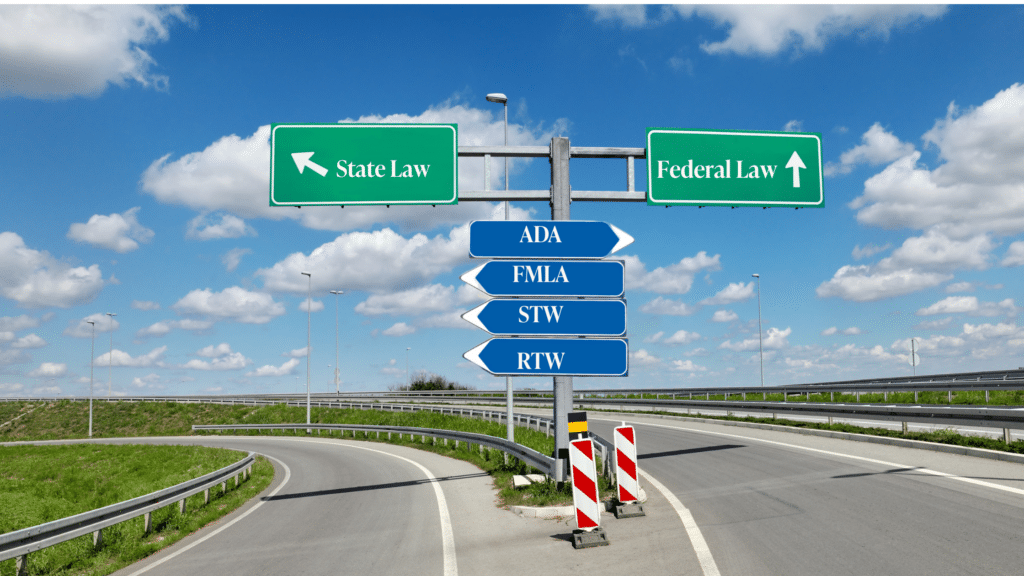Special Report
Effective Jan. 1, 2022, the Workers’ Compensation Appeals Board (WCAB) amended its Rules of Practice and Procedure to permit electronic service, including via email. That represents a huge change for the practitioner. This article addresses questions we’ve encountered since the amendment.
The New Rules
The new rules are available on the DWC website. They include an amendment to the California Code of Regulations § 10625 –– CCR 10625(b) now expressly permits electronic service, in addition to personal service, first-class mail and any alternative method that would effect equivalent service. In addition to other requirements, CCR 10625(c) now directs that if a document is served electronically, the proof of service must state the names and email addresses of the person serving and the person served electronically. To facilitate electronic service, CCR 10400 was amended to require that a notice of representation includes the email address of the law firm or other entity’s agent for service of process.
The WCAB, however, did not adopt strict or elaborate rules regarding electronic service. In the Final Statement of Reasons, the WCAB explained:
[su_tabs]The experience of the pandemic has taught us that it is preferable to allow the parties the greatest possible latitude over the method of service, because rules cannot adequately anticipate the full range of possible future developments that may render their provisions ineffective in light of changed circumstances. We firmly believe that the vast majority of participants in the workers’ compensation system are capable of resolving disputes over the method of service between themselves, without the need for detailed regulatory schemes or judicial intervention. For such individuals, enacting detailed rules regarding electronic service is unnecessary and potentially burdensome, just as it is unnecessary and potentially burdensome to have detailed rules for any other method of service, because the parties have no trouble finding mutually acceptable resolutions to any issues that might arise.[/su_tabs]
The WCAB added:
Conversely, our judgment is that detailed rules regarding the method of service are more likely to empower the small number of bad actors in the system than to constrain them, by allowing them to assert frivolous, non-material violations of the rules governing the method of service as a means to gain advantage over opposing parties. For this reason, we ultimately decided against including detailed regulations regarding the method of service. Unfortunately, without much guidance from the WCAB within the regulations themselves, a lot of questions have been raised about how electronic service should be handled. Although some of these questions were addressed by the WCAB in the Final Statement of Reasons for the amended regulations, some have not.
Is electronic service preferred over the other methods of service?
No. The WCAB was clear that in amending its rules, it was not mandating electronic service nor preferring it over any of the other methods. Electronic service was adopted as an option, and the WCAB decided to “leave it to the parties to sort out among themselves the best way to serve one another.”
How may a party serve documents electronically?
CCR 10625 seems to embrace electronic service by email, as it requires the proof of service to include the email addresses of the person serving and the person served electronically. But CCR 10305(i) defines “electronic” as “by any available technological means.” So it might be possible to serve documents by other electronic methods.
The WCAB warns that parties should limit electronic service to reasonable electronic methods. It stated, “We do not believe that parties will attempt to serve other parties via social media accounts or other similar methods. Just as it would be unreasonable and in bad faith for a party to attempt to serve another party via mail at a holiday home, it would be unreasonable and in bad faith to attempt to electronically serve a party via a social media account.”
May a party choose not to be served electronically?
No. The WCAB explained that it considered allowing the parties to opt out of specified methods of service, but concluded that it would be too burdensome for parties to keep a list of which methods of service were acceptable to whom. It believed that doing so would “empower non-material objections to the method of service even when the documents were received and there was no ill intent by the serving party.”
Is CCR 10625 inconsistent with DWC Rule CCR 10205.6?
Yes, but it appears that CCR 10625 supersedes DWC Rule CCR 10205.6, which permits a party to designate a preferred method of service for receiving documents from the WCAB. It also permits parties to agree to a method of service between each other, and requires service by first-class mail absent an agreement.
DWC Rule CCR 10205.6, however, was filed in 2012. CCR 10625 was revised to make permanent changes in response to the COVID-19 pandemic. The WCAB explained that “existing Rule 10625 allows service by a range of methods other than first-class mail, even in the absence of an agreement between the parties; the proposed amendments are therefore no more inconsistent with DWC Rule CCR 10205.6 than the existing rule.” So, the WCAB recognized that CCR 10205.6 was inconsistent with CCR 10625 even prior to the amendments, and that CCR 10625 should control.
What happens if a document is electronically served on multiple parties, but the serving party is notified that service to one or more of the parties failed?
A good example of that is notification to the sender that the email was not received –– that is, it “bounced back.” In such cases CCR 10625(d) requires the server either to: (1) re-serve the document on all recipients and execute a new proof of service; or (2) provide a courtesy copy within a reasonable period of time to the recipient for whom service failed.
If the document is re-served on all recipients, the date of service becomes the new date from which the parties must act. If only one party did not receive service, the serving party may use the second option and provide a courtesy copy, which would retain the original date of service for all parties. Presumably, the party served late would receive additional time to act.
Are all legal pleadings required to include a law firm’s email address?
No. The regulations require only a notice of representation to include a law firm’s email address; it’s not required on all legal pleadings. CCR 10400 requires a notice of representation to include a law firm’s email address. CCR 10510 and CCR 10520, which relate to the requirements for all petitions and pleadings filed with the WCAB, were not amended.
Can a law firm designate an email address for service by email?
That’s unclear. The WCAB has recommended that the parties choose methods of service that are “mutually acceptable, regardless of whether the rules technically require it.” To avoid inundating the email addresses of individual attorneys, some law firms have taken the position that electronic service must be made to the email address provided on the notice of representation.
If a law firm designates a firmwide email address for service, but a document is electronically served on an attorney’s personal email address, would the service be defective?
That’s unclear. Again, the WCAB wants parties to find “mutually acceptable resolutions to any issues that might arise.” If a document is received, however, the attorney should be expected to timely act on the document.
What happens if a document electronically served is blocked by a spam filter?
The WCAB did not address that issue. It explained, “We do not believe that it is advisable to attempt to include specific provisions related to documents blocked by spam filters or otherwise sent but not actually received, just as the rules do not include specific provisions for mail service; such situations are better addressed on a case by case basis according to the specific facts involved.”
Does the mailbox rule apply when documents are served electronically?
Yes. CCR 10605(a) states, “When any document is served by mail, fax, e-mail or any method other than personal service, the period of time for exercising or performing any right or duty to act or respond shall be extended by [five calendar days for service within California;…]” (emphasis added).
Parties, however, must be careful –– CCR 10605 applies only when the time to act is based on “service.” When the time to act is based on “receipt,” CCR 10605 does not apply. For example, CCR 10744 states that a party may object to a declaration of readiness to proceed (DOR) “within 10 calendar days after service of the declaration.” So the mailbox rule applies when a party objects to a DOR.
In contrast, Labor Code § 4610(i) establishes that the time limit for utilization review is based on “receipt of a request for authorization for medical treatment …” So, the time period to act on a request for authorization for medical treatment is based on the date of receipt. CCR 9792.9.1(a)(1) adds that “the DWC Form RFA shall be deemed to have been received by the claims administrator or its utilization review organization by facsimile or by electronic mail on the date the form was received if the receiving facsimile or electronic mail address electronically date stamps the transmission when received. If there is no electronically stamped date recorded, then the date the form was transmitted shall be deemed to be the date the form was received by the claims administrator or the claims administrator’s utilization review organization.”
What happens if a document filed electronically with the WCAB does not include a proof of service?
CCR 10510(d) states, “A failure to concurrently file a proof of service with a petition or answer constitutes a valid ground for summarily dismissing or denying the petition or summarily rejecting the answer.” So the WCAB can dismiss a petition that does not include a proper proof of service. Dismissal for such failure, however, is not mandatory, and the WCAB still could decide a petition if the party cures the defect or is not prejudiced.
What obligation does the recipient have if a document served electronically does not include a proof of service?
Unknown. CCR 10625(b) allows for electronic service generally. CCR 10625(c) speaks to how the proof of service is to be handled, seemingly assuming that such proof will be attached in every instance. The regulation does not address the obligation of a party to respond when it receives an email without a proof of service. Of course, this happens all the time. Often, for example, an objection to the opinion of a treating physician in order to start the QME process is sent by mail without a proof of service. What if it’s done by email?
Because the WCAB has opened the door to a new era of electronic service by enacting this regulation, it might well be argued that a document received by email without a proof of service will still be enough to effectuate any obligation to respond. The prudent practitioner, therefore, will treat any email or document attached to an email as received, and will make sure not to risk blowing any deadlines. Strict attention to all email transmissions could represent a strong shift for many practitioners.
What happens if there’s a dispute between parties regarding electronic service?
The WCAB wants parties to work out disputes over the methods of service between themselves. If they are unable to resolve a dispute, either party may file a petition pursuant to CCR 10510 seeking assistance from the WCAB. A party acting in bad faith probably would be subject to sanctions pursuant to LC 5813.
Is the WCAB planning to adopt additional regulations regarding electronic service?
The appeals board did not believe detailed regulations were necessary, but added that it would carefully monitor the situation. If the rules produce significant confusion and problems for the workers’ compensation community, it stands ready to revisit the issue and clear up any problems.









